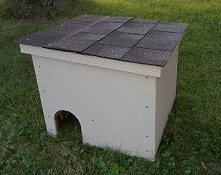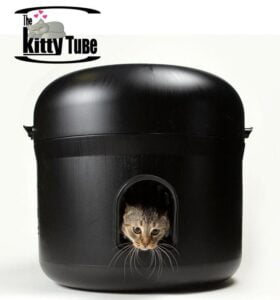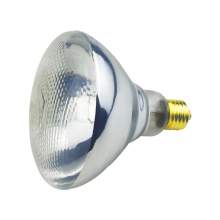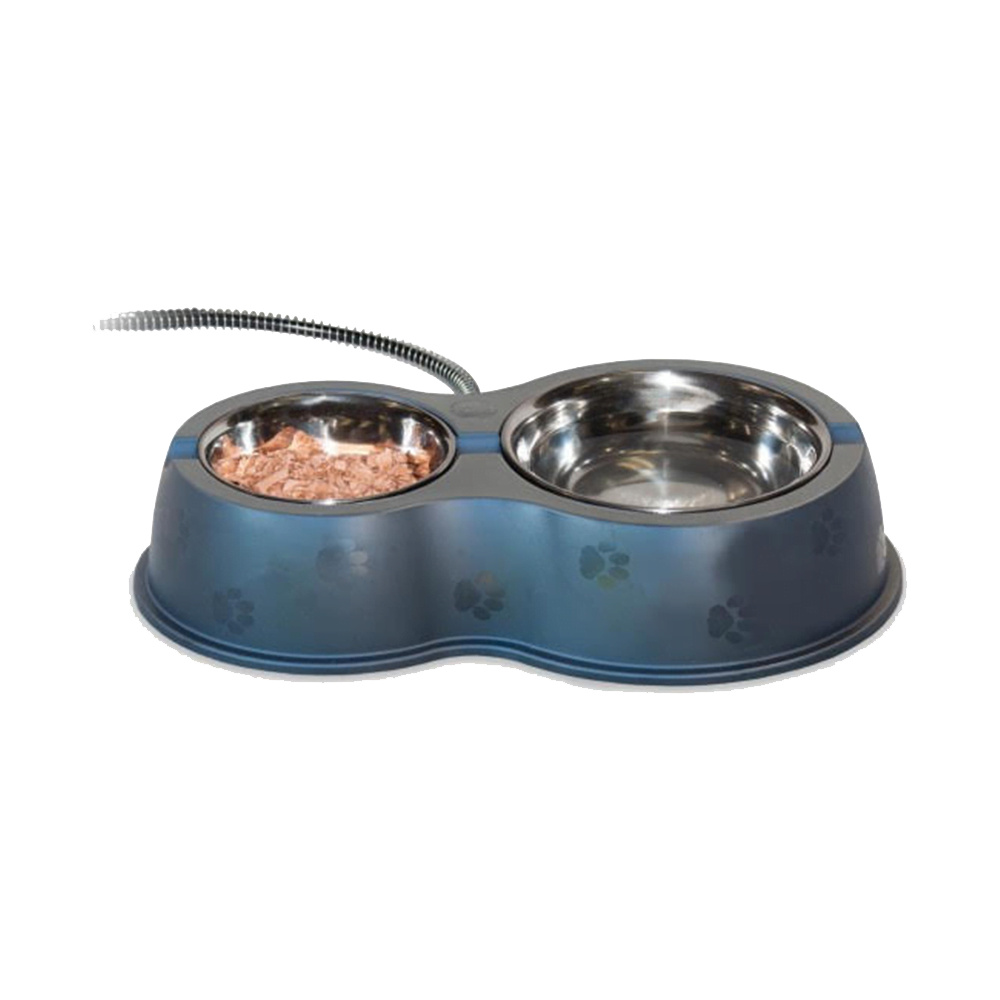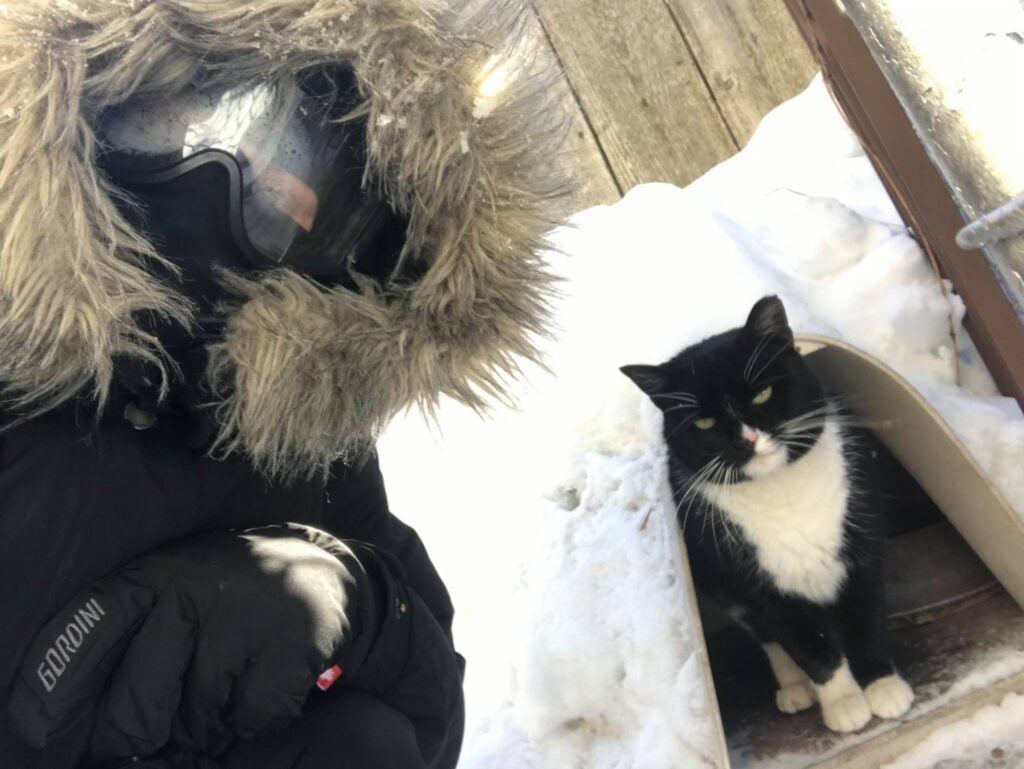
Cats have lived outdoors for thousands of years and are highly resilient to cold temperatures. Even indoor cats grow thicker coats of fur in winter. Cats that are truly feral and not socialized to people should not be brought indoors, regardless of the temperature outside, as they are extremely stressed in captivity.
Properly insulated shelters can help cats stay comfortable during prolonged cold spells. Cat shelters should not have two access holes. There is no evidence showing that cats need an entrance/exit to avoid predators. In a compact shelter, cats position their head near the opening to see any potential threats.
There are many good shelters and accessories on the market to keep outside cats comfortable, hydrated and healthy. Cats in Action has compiled a “Top 10“ list below to assist with winter preparedness. Product recommendations are at the bottom of the page.
Winter Preparedness Top 10 List
- Provide insulated winter shelters. You can make or buy shelters. Use a waterproof container, such as a storage tote, cooler or wooden structure with sheet foam insulation or Styrofoam.
- Use straw in shelters, not hay. Do not use anything cloth, even if it is wool or fleece. Cloth retains moisture from air and freezes, keeping cats colder.
- Add a heat source, if possible. Heating pads made for outdoor use can fit under straw. If no outlet is available, use a microwavable disk to place in shelters, under food and water.
- Dehydration is a serious concern in winter when water freezes quickly. Provide large bowls of fresh water consistently. A water bottle filled with rock salt submerged in a large bowl can also keep water from freezing. A heated water bowl is ideal. Mix water into canned food to increase hydration levels.
- Provide additional food. Cats burn more calories in winter maintaining their body temperature.
- Provide a feeding station. Food bowls also need shelter from snow and rain. Storage totes make a great DIY feeding station.
- Clear paths to shelters down alleys, sidewalks, across grass, wherever the cats normally travel. It’s hard for them to jump through high snow.
- If cats seek shelter through a hole in an abandoned garage or other small space, shovel them out to make sure they are not trapped!
- Only use pet-friendly rock salt that is not harmful if swallowed.
- Tap the hood of the car before starting, in case cats have sought shelter under it.
Below are cat shelters available online that we recommend. At the very bottom are Detailed Instructions to make your own shelter.
Feral Villa
Feral Villa makes a popular, durable cat shelter out of a fiber composite material that resists mold and termites. It features a raised bottom, insulated insides and a removable, shingled roof. Feral villas are fairly lightweight and portable. They sleep 1-2 cats.
Kitty Tube
Kitty Tube is an upscale “green” shelter molded from post consumer content consisting of recycled milk and detergent bottles. Kitty Tubes feature fitted insulation and an awning over the entranceway. Double insulation is available as well as custom heating pillows. They sleep 1-4 cats. Kitty Tube maintenance/cleaning.

K&H Thermo Outdoor Kitty House
This K&H House features water-resistant construction, clear door flaps, tool-free assembly, several color and pattern choices and a one-year warranty. Heated models feature 20-watt heating system.
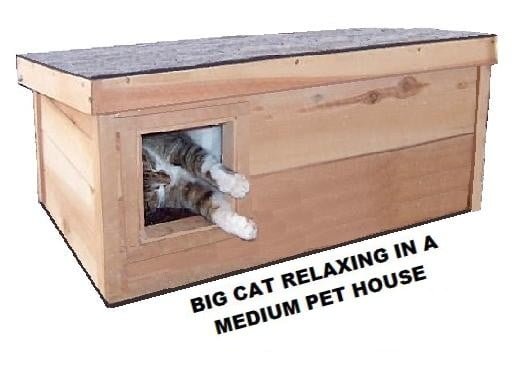
Ark Workshop
Check out the array of outdoor cat houses, feeding stations, and other supplies from Ark Workshop.
Furhome Collective
Shelters for cats in the winter time, along with other products. Learn more here.
Build Your Own Shelter
Even if you aren’t handy, you can easily build your own winter shelter out of a storage tote, 1″ thick sheet foam insulation, duct tape and straw. Our templates show you the exact sizes to cut 1″ insulation pieces for an 18 gal black storage tote available at Menard’s.
You can also recycle a cooler or Styrofoam cooler. Make sure the hole is 5-6” in diameter and is at least 6” off the ground, for snow and rain-splash clearance. TNR advocates Gail and Mike show you how a standard beverage cooler can be turned into a deluxe cat shelter in this video. Kieth Stout shows you in this video how to use a recycled milk crate and styrofoam cooler to make a cat shelter for less than $3.00.
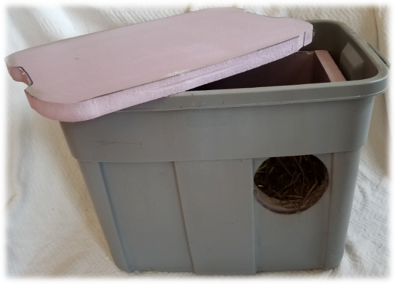


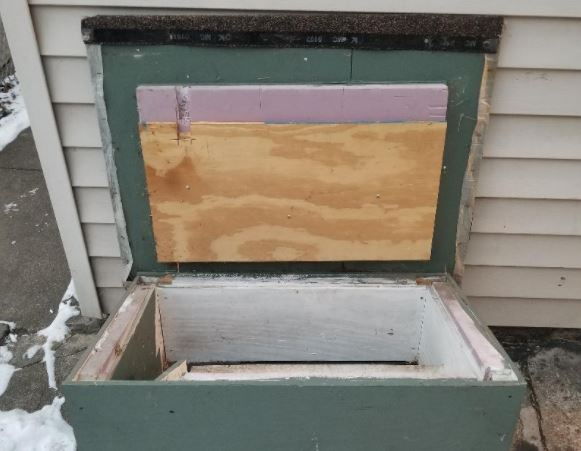
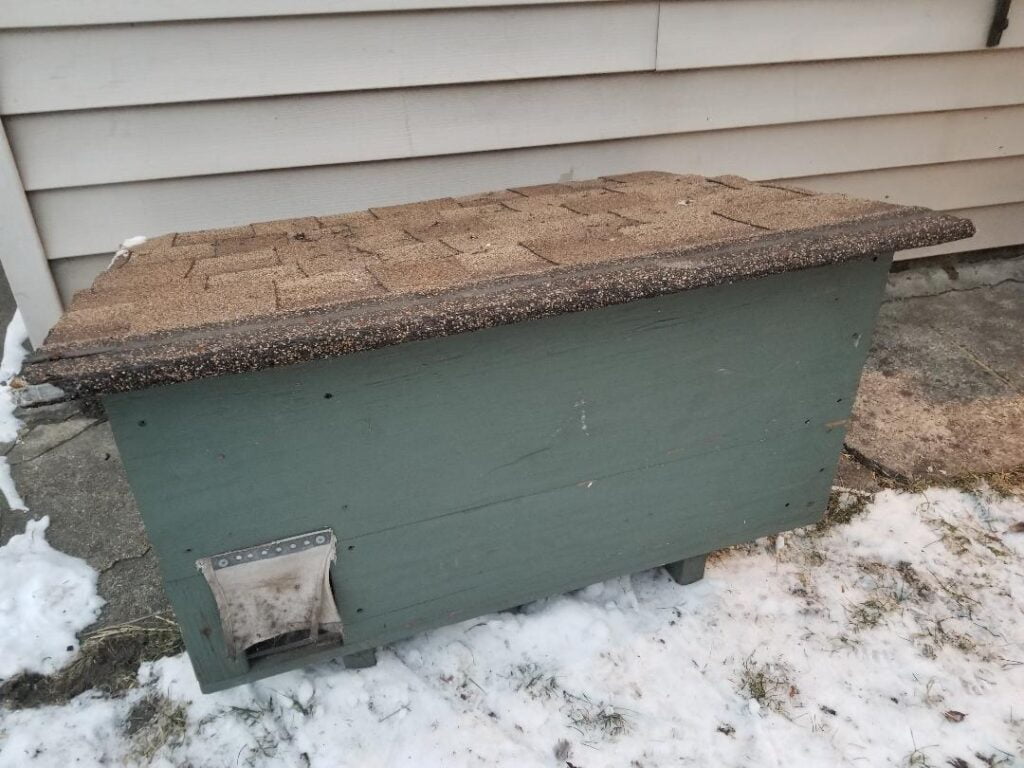
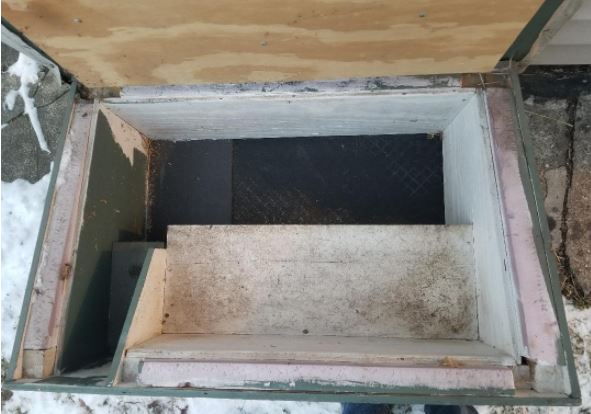
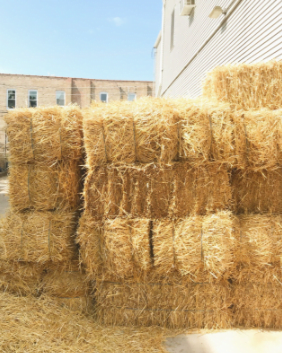
Whether you purchase or make a shelter, avoid cardboard boxes and metal housings, as they do not insulate. Do not use blankets, towels or anything cloth, including fleece and wool, as these materials retain moisture from the air and freeze, making cats colder. Straw (not hay) is an excellent insulation and is all you need inside a shelter. Make sure the straw is not the bleached, processed kind that is soft and flat and doesn’t insulate. Real straw is stiff and hollow. Your local feed store is the best source for straw. In Chicago, Belmont Feed & Seed will sell straw in smaller bags for the feral cat community, so you don’t have to purchase an entire bale. The Feed Store at 5408 S. Harlem Ave in Summit IL also carries straw.
For additional comfort, you can add heating pads or a heat lamp. Cats in Action recommends K&H hard-sided outdoor heating pads. The 9 x 12 size fits nicely inside storage tote shelters. A 12.5” x 18.5” size is also available for larger spaces.
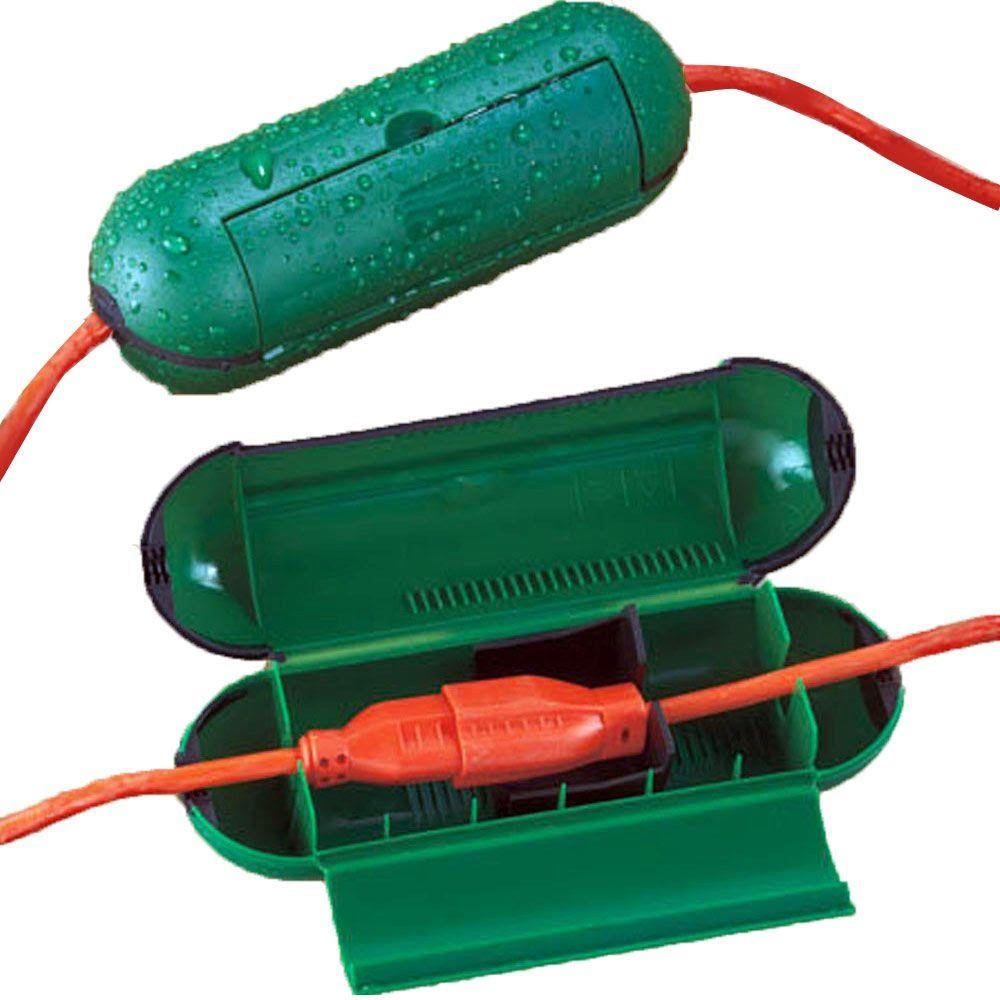
Make sure anything you plug in is intended for outdoor use, or is protected from the elements. Heating pads should have a wire-wound chew-proof cord and sealed electronics. If you need to use an extension cord, protect it from the elements with a weatherproof cover
Hydration is one of the greatest concerns in winter. When puddles freeze, cats can struggle to keep hydrated, making them more vulnerable to illness. A heated water bowl is a great solution for freezing water. There are many varieties on the market. Heated bowls are also useful in keeping canned food from freezing.

If you do not have an outdoor outlet, a microwavable SnuggleSafe disk can provide heat for up to 10 hours at a time. You can place a SunggleSafe disk inside a shelter, or you can use it to warm a water or pet food bowl.
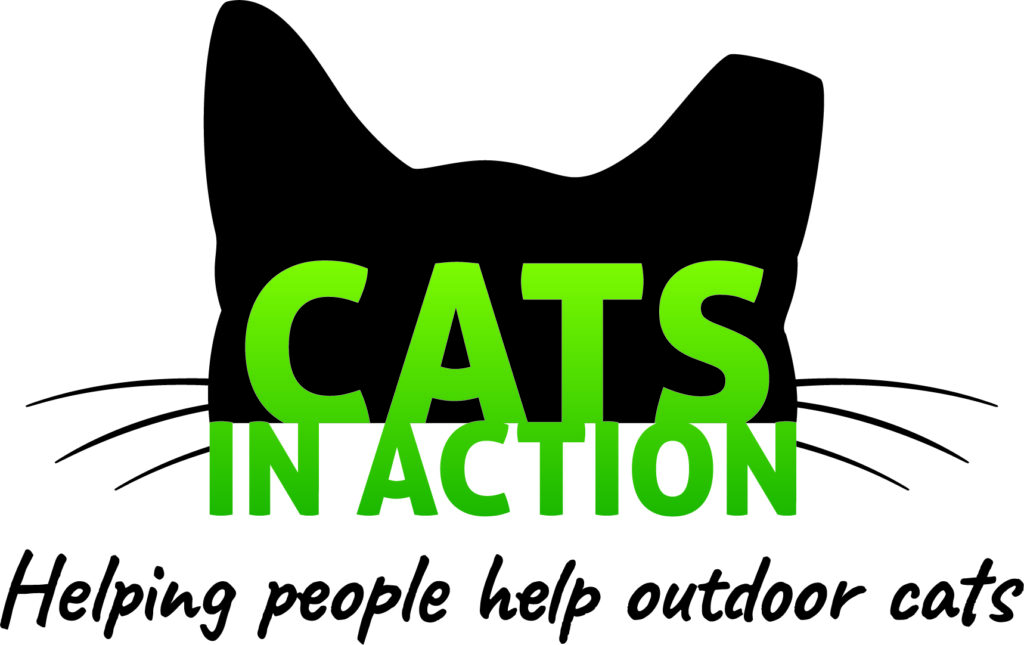
 Wishlist
Wishlist